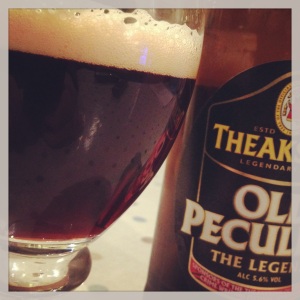The Tinted Guest Blog: James Berry @ London Crawling
The Tinted Guest Blog offers members of the wider Tinted Circle a channel to share their views: often controversial, typically sharply observed, always pro beer. This time, London beer enthusiast James Berry at London Crawling offers his perspective on what drives the emerging trends in the changing face of the London pub scene.
It’s a strange thing fashion – it is inherently competitive: staying one step ahead of the rest, always having/doing/seeing the new thing, being at the forefront of the zeitgeist. Despite this we so often refer to the past to define the trends of today and no more so than in the ever changing appeal of that wonderful bastion of British life – the Pub. Publicans looking to retain their appeal in an increasingly ‘noisy’ leisure market are looking to the past for inspiration, providing their customers with a haven away from the pressures of modern life – a space where they can connect with other people without the need for technology.
Looking back over the last ten years or so I can pinpoint two distinct shifts in style of Britain’s drinking establishments. Taking the early Noughties as my start point, the pub was largely irrelevant to young people, as appealing as saving up for things and eschewing University for a job. This was the era of the VENUE BAR where the walls were white, the fittings chrome, and the beer bottled. In fact it was often not beer at all but a fruit flavoured alcoholic beverage called – somewhat irresponsibly in hindsight – an Alco-Pop. The music was repetitive and a trip to the toilet was not dissimilar to a tour round a NASA facility – modernity ruled and there was no time for tradition. The pub was where your Dad went for a quiet pint with his mates.
However, around 2007-ish there was a change. It was subtle to begin with but slowly pubs that had lay dormant for so long began a process of rejuvenation – original fixtures and fittings were uncovered, old pub names proudly re-claimed and displayed as badges of authenticity and what’s more they began to serve food. This was not your traditional British pub fare either; this was restaurant quality food, ordered at the bar and delivered to you on a wooden board while you relaxed on a re-claimed leather sofa. Lamb shanks with jus; Wood pigeon with Celeriac mash, Steak that was aged rather than old – all washed down with a Continental Lager or increasingly a Cask Ale or IPA. Suddenly modernity was old hat as the tastemakers leading this pub (re)evolution looked to the past to create the future. As New Labour exited stage left (or should that be centre left), welcoming in an era of credit crunches and austerity it seemed people wanted something different from their leisure time. These pubs were more refined in their traditionalism – they required you to sit down and talk with your friends, to savour rather than consume with modernity reserved to the Wifi access essential to stay connected to social media or tune in to goings on at work while you had lunch. Even the music was different; DJs were perched on the end of the bar or on a table around the corner from the dining room playing Johnny Cash, 60’s Soul or anything else that suggested refinement, taste and authenticity.
The problem with fashion is that eventually the new trend becomes the norm and it is no different with pubs. No sooner had these independent gastro pubs staked their claim for society’s disposable income than they were either being diluted by copyists or bought up by the large pub chains. All of this begged the question as to where the aspiring publican, looking to do something different, goes to next for inspiration. Well you guessed it, back in time.
Walking along Mare Street in Hackney this summer, I came across a new pub opening. There was little about the façade of the place to suggest what lay inside. It was either going to be another gastro pub or possibly one of the ever diminishing number of traditional boozers unchanged from the mid-80’s (they often look similar but in reality have a very different appeal). To my surprise it was neither. Instead it was what I would describe as a Modern Traditional pub.
The pub (which for the sake of this post will remain nameless) offers a carefully chosen smorgasbord board of real ales and traditional ciders, many from local London breweries, fiercely independent and working to traditional brewing methods. The food offering was limited to ‘English Tapas’ (scotch eggs, pork pies, etc), enough to take the edge off but nothing that could be described as a meal. However, the most striking thing was the complete lack of that familiar fabric of modern life – technology. There are no TVs, no WIFI and barely a social media update in sight despite a largely media-savvy mid-20’s to 30’s crowd. This was a place where people came to drink beer and talk to each other, just like they used to.
My visit got me thinking, if this is more than just a few individuals operating within a niche and the start of another trend, what is the appeal to those people who choose to spend time there? Well for me it’s quite simple. Technology enables us to be connected to our friends and family more than ever before and our ability to step away from the demands of working life is increasingly limited. We crave escapism and quality time with those people we choose to have in our lives and where better to get this than down the pub, a haven away from the world, just like it always has been. In an increasingly fast paced world, stopping to look backwards so often helps us to find the way forwards – cheers to that, I say!
© Beer Tinted Spectacles, 2013




